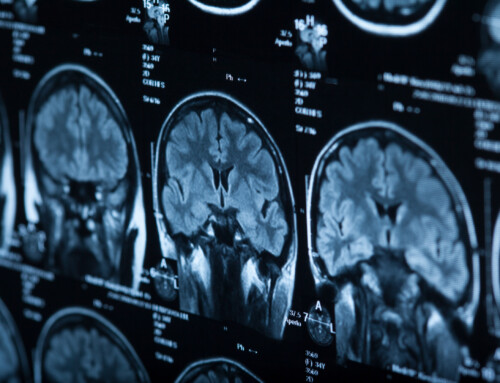Physical Therapy for Dysautonomia
Dayle Carhart, SPT
What is PCS?
PCS, or post-concussion syndrome is when concussion symptoms last longer than typical recovery time, usually past 1-2 months. Often times with PCS, three or more symptoms continue to present past the recovery time. Some symptoms or post-concussion syndrome include:
- Headache
- Dizziness
- Light sensitivity
- Nausea
- Problems with balance and walking
- Fatigue/tiredness
- Problems concentrating
- Memory difficulties
- Irritability
What is Dysautonomia?
Dysautonomia is a condition that can occur after a concussion and can play a major role in PCS. Dysautonomia is when there is a dysfunction between the brain, autonomic nervous system, and cardiovascular system connection. This results in the autonomic nervous system being unable to appropriately regulate heart rate and blood pressure during movement and activity/exercise. Often times, exercise will cause an increase in symptoms because of the poor heart rate and blood pressure control, and postural changes can cause abnormal heart rate and blood pressure changes. Upon sitting, standing, and walking, some patients can feel light headed, dizzy, and in some cases, have episodes of fainting.
How is Dysautonomia Diagnosed?
Dysautonomia is often diagnosed by specialists, both cardiovascular and neurological.
Heart rate variability (HRV), and a cardiac safe exercise test called the Buffalo Concussion Treadmill Test (BCTT), are the most common ways to assess and diagnose dysautonomia. HRV is a non-invasive way to measure the variation in a patient’s heart rate over a specific time period. HRV has been found to be lower in patients suffering from dysautonomia.
The BCTT is a treadmill test in which incline and speed of the treadmill are increased over specific periods of time. Heart rate, symptom severity, and intensity of exercise are measured throughout the test, and the test is stopped if the intensity and/or the number of symptoms significantly increases, if the patient has significant changes in the way they move or look, and/or if the patient reports they feel unsafe continuing the test. The heart rate recorded upon termination of the test is then used to provide a safe exercise prescription for that specific patient, which is explained below.
Treatment for Dysautonomia
Research shows that aerobic exercise is the best treatment for dysautonomia, but the guidelines are specific.
The heart rate taken when the BCTT is terminated is used to determine the target heart rate that cannot be exceeded during exercise (often 80-85% of the heart rate at test termination). The reason for the target heart rate is so that patients can exercise safely without increasing symptom intensity. From there, patients are given instructions to exercise 5-7 days a week using a treadmill or elliptical, for no more than 20-30 minutes a day, keeping their heart rate below their calculated target heart rate. Patients are usually given a portable heart rate monitor that can be worn at all times to be able to track their heart rate. Then, every 2-3 weeks, the patient performs the BCTT again, and a new target heart rate is established. Patients are also instructed to increase fluid and electrolyte intake throughout recovery.
The important things for a patient with PCS and dysautonomia to be educated on extensively are the time it will take to recover, and the importance of not pushing themselves past the exercise prescription given. It can take months for a patient to recover, so it is important to exercise within the given limits and seek support from the frustration that is likely to occur during the recovery period.
Other Ways a Physical Therapist Can Help
For patients with PCS, dysautonomia is usually not the only diagnosis. Patients can experience other problems from concussion arising from their vestibular system, oculomotor system, and/or the cervical spine (muscles, ligaments, and/or vertebrae). Physical therapists can provide patient specific vestibular therapy, oculomotor retraining, and manual work and exercises for the neck region. All of these types of physical therapy services can be provided while managing dysautonomia and will allow the patient to recover as efficiently as possible to be able to return to their activities.
Once a patient has recovered, a physical therapist can help patients by providing them with return to sport, recreation, and/or work exercises. This can include a multitude of exercises for improving muscle strength, muscle endurance, balance and postural control, and joint stability, so that return to activity is safe for that specific patient.
Contact Our Upstate NY Physical Therapy Clinics
Schedule your appointment at our Upstate NY PT clinics with our experienced staff to discuss your physical therapy needs. Schedule a visit at one of our Capital Area clinics in Malta, Latham, and Queensbury. serving the Saratoga, Ballston Spa, Burnt Hills, Clifton Park region, Glens Falls, Lake George, Hudson Falls, Fort Edward, Corinth, Latham, Troy Watervliet region.






